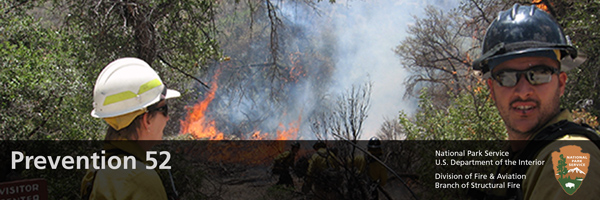
As human populations grow, city boundaries expand and neighborhoods develop into wildland areas, now called the Wildland Urban Interface. These areas have a greater chance of being impacted by fire because they contain large amounts of plant landscaping, fuel sources and structures that could sustain a fire.
Though people can never fully protect their homes against wildfires, you can take steps to reduce the risk. Clearance requirements vary from state to state and county to county. Check with your local fire department to learn what the specific clearance standards are in your area. Here are some examples:
- Remove combustible vegetation from around any structure. Thin out continuous tree and brush cover and remove dead limbs, fallen trees, leaves, twigs and evergreen tree cones within 30 feet of the structure to create a "safety zone of low fuel density all around the home" (NFPA).
- Prune trees branches to 10 feet above the ground and remove leaves and twigs from beneath trees, in the yard, on roofs, patios and landscaped shrubs.
- Do not use highly flammable landscaping near structures. Avoid using bark or wood chip mulch in the safety zone.
- Stack firewood uphill at least 15 feet from a house. Fire risks increase when wooden decks, patios and woodpiles are placed close to structures or when flammable materials are stored near structures.
- Be aware that roofs and walls made of untreated flammable materials such as wood shakes and shingles pose a significant fire threat. Wind-carried embers can ignite such fuel sources.
- Clean roof and gutters.
- Mow tall grass and keep it to a maximum height of two inches within the home safety zone.
- Inspect and clean chimneys regularly. Equip chimneys for wood burning heating units with spark arresters.
- Avoid all outdoor burning.
- Prevent mishaps with outdoor cooking grills by carefully maintaining the grill and using caution during grill use.
Fire Info for You
Everyone
Concerned about brush, grass or forest fires where you live? Use this flyer to learn more about Firewise principles and find immediate, simple steps and resources that can help you reduce the risk of wildfire damage around your home..
Park Structural Fire Coordinators
Is you park effectively mitigating the fire hazards in the park's housing and other structures that are in the Wildland Urban Interface? Contact your parks' Fire Management Officer (FMO) or local fire department for guidance.
Park Leadership
Did you know that there is policy written to address wildland firefighters suppressing structural fires which include car fires, trash and dumpster fires and everything else that is not a wildland fire. Read the policy (internal link) to find out what you need to know.
Take Action
- Investigate JUST ONE link below to prepare your home for wildfire safety!
- Prioritize the actions that you can take to make your home safer from wildland fire and do one of them on your weekend.
- For those of us that live in park housing, report wildland fire safety concerns to your supervisor.
NPS Fire Facts
Most wildland fires occur in sparsely populated areas and are managed to remain within park or forest boundaries. Wildland fires can be beneficial. They reduce fuel loads, such as dead standing or fallen limbs, logs, leaves, pine needles, shrubs, excess grass and also living trees and shrubs. Such periodic burning reduces the intensity of each fire that occurs in subsequent years, consequently decreasing the impact of fire on fire tolerant plants and burrowing animals. If fuel loads are not reduced, the forest can become a fire hazard similar to a basement packed full of newspapers. When the fuel loads are reduced, undesired fires can be minimized.
Last updated: September 19, 2021
